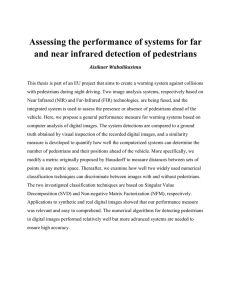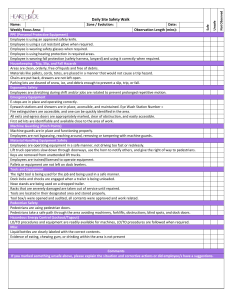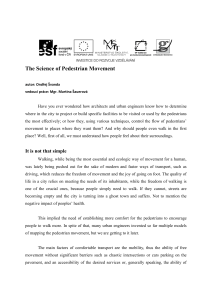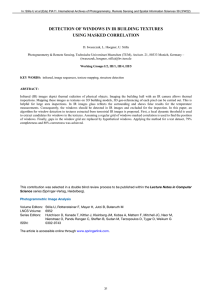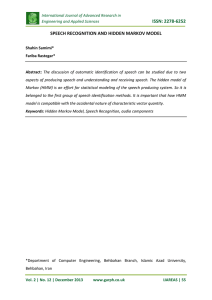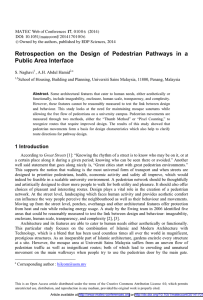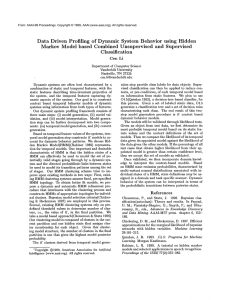Document 11841242
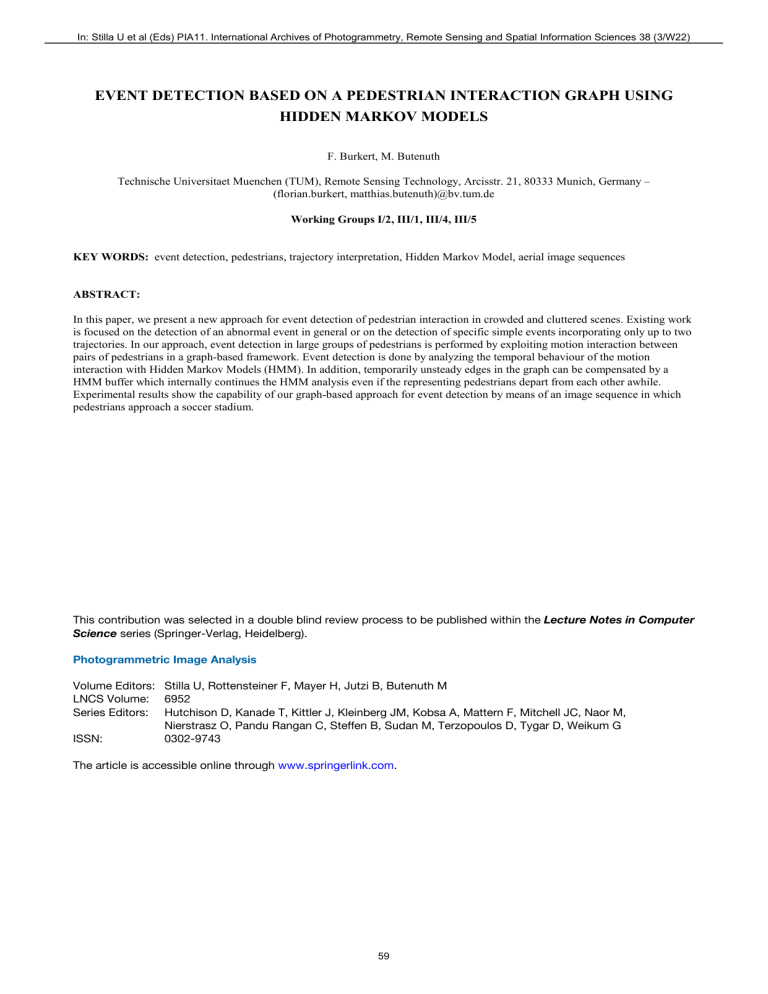
In: Stilla U et al (Eds) PIA11. International Archives of Photogrammetry, Remote Sensing and Spatial Information Sciences 38 (3/W22)
EVENT DETECTION BASED ON A PEDESTRIAN INTERACTION GRAPH USING
HIDDEN MARKOV MODELS
F. Burkert, M. Butenuth
Technische Universitaet Muenchen (TUM), Remote Sensing Technology, Arcisstr. 21, 80333 Munich, Germany –
(florian.burkert, matthias.butenuth)@bv.tum.de
Working Groups I/2, III/1, III/4, III/5
KEY WORDS: event detection, pedestrians, trajectory interpretation, Hidden Markov Model, aerial image sequences
ABSTRACT:
In this paper, we present a new approach for event detection of pedestrian interaction in crowded and cluttered scenes. Existing work is focused on the detection of an abnormal event in general or on the detection of specific simple events incorporating only up to two trajectories. In our approach, event detection in large groups of pedestrians is performed by exploiting motion interaction between pairs of pedestrians in a graph-based framework. Event detection is done by analyzing the temporal behaviour of the motion interaction with Hidden Markov Models (HMM). In addition, temporarily unsteady edges in the graph can be compensated by a
HMM buffer which internally continues the HMM analysis even if the representing pedestrians depart from each other awhile.
Experimental results show the capability of our graph-based approach for event detection by means of an image sequence in which pedestrians approach a soccer stadium.
This contribution was selected in a double blind review process to be published within the Lecture Notes in Computer
Science series (Springer-Verlag, Heidelberg).
Photogrammetric Image Analysis
Volume Editors: Stilla U, Rottensteiner F, Mayer H, Jutzi B, Butenuth M
LNCS Volume: 6952
Series Editors: Hutchison D, Kanade T, Kittler J, Kleinberg JM, Kobsa A, Mattern F, Mitchell JC, Naor M,
Nierstrasz O, Pandu Rangan C, Steffen B, Sudan M, Terzopoulos D, Tygar D, Weikum G
ISSN: 0302-9743
The article is accessible online through www.springerlink.com
.
59

